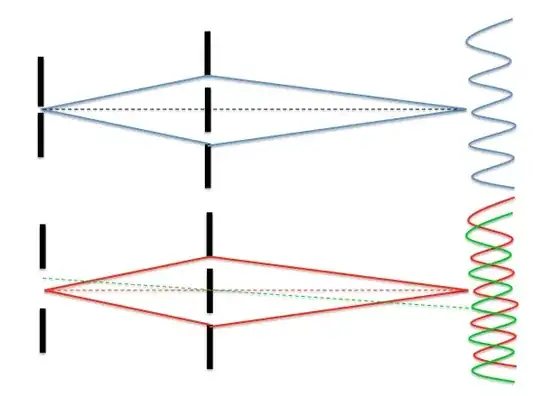
I was wondering what would happen to the fringe pattern displayed on the screen if the first slit (as shown in the picture), which is also known as "single slit", was made a bit wider. I read it in my book. I don't understand it. Anyway, it quotes
If the single slit is too wide, each part of it produces a fringe pattern which is displaced slightly from the pattern due to adjacent parts of the single slit. As a result, the dark fringes of double slit pattern become narrower than the bright fringes, and contrast is lost between the dark and the bright fringes.
Please answer the question in your own words and try to explain to me what the quote is trying to say. Also, when it says "parts", what does it mean?

